Musket Balls, Fake Teeth and More Found Beneath Malcolm X’s Childhood Home
Your average city backyard holds an awful lot of history.
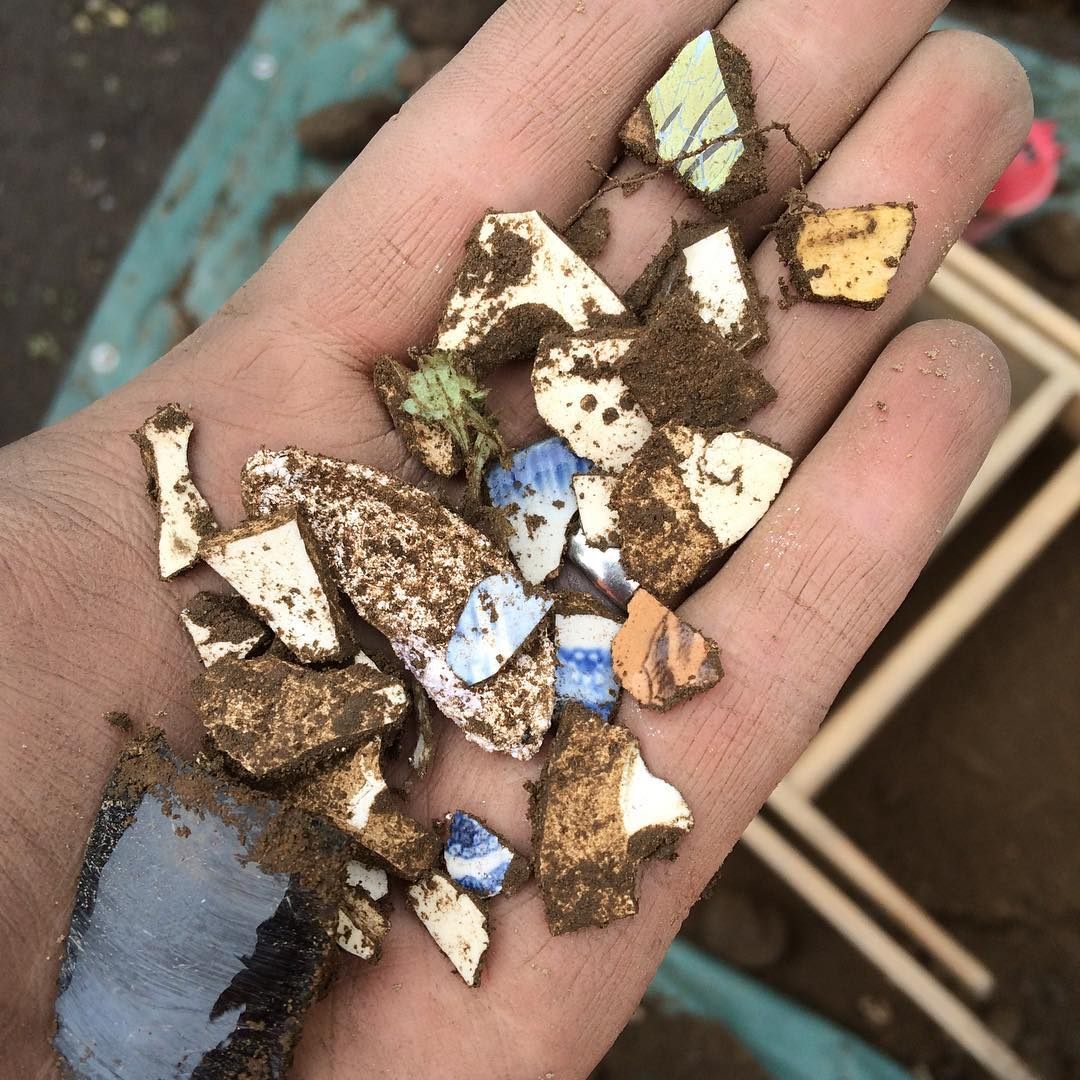
Joseph Bagley with a handful of 18th and 19th century ceramic shards, unexpectedly unearthed at the Malcolm X House in Roxbury, Massachusetts. (Photo: Joseph Bagley/City of Boston Archaeology Program)
On a recent Thursday afternoon, Joseph Bagley, came striding out from the backyard of 72 Dale Street in Roxbury, a hard hat swinging from his left hand. Steering through the flotsam of the day’s efforts—scattered piles of bagged artifacts; perfectly rectangular pits; volunteers sitting on buckets, taking notes—he reached the end of the driveway, where a surveyor stood, waiting for an update. Bagley wiped his brow with a dusty shirt cuff. “Did you hear?” he asked. “We finally found the Irish families!”
As Boston’s official City Archaeologist, Bagley is charged with investigating everything from unearthed shipwrecks to historic sites like 72 Dale Street, which is best known to locals as the “Malcolm X House.” As a teenager, the future civil rights leader lived here for seven years with his half-sister, Ella Little-Collins. Decades later, the house is vacant and in disrepair. Malcolm’s nephew, Rodnell Collins, hopes to restore it to its 1940s glory—ultimately, he wants to transform it into graduate student housing, for scholars of social justice and African-American history.
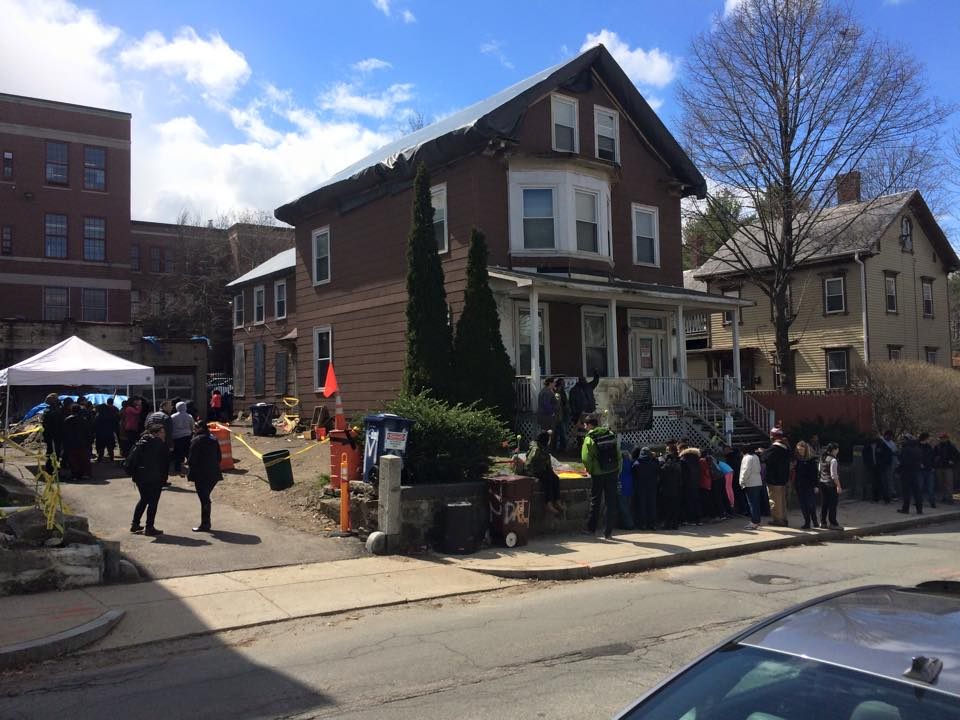
The Malcolm X & Ella Little-Collins House in its current state. (Photo: Joseph Bagley/City of Boston Archaeology Program)
But before the construction workers can break ground, Bagley has to take a look. So for two weeks this spring, he and his crew of grad students, drop-ins and regular volunteers have spent their days digging up, sorting through, and puzzling out the property’s multi-layered history.
When Malcolm X first came to Roxbury in the summer of 1940, he was Malcolm Little, a 15-year-old who had spent much of his life in foster homes in the Midwest. With the help of his half-sister, Ella, whom he described as “a leading light of local so-called ‘black society,’” he took in all of Boston: its culture, its history, its class differences. When Malcolm found it difficult to return to Michigan, Ella formally adopted him, and he lived at the Dale Street house with her until he was 21.
Later, he would consider his time there essential to his personal trajectory. “No physical move in my life has been more pivotal and profound in its repercussions,” he wrote.
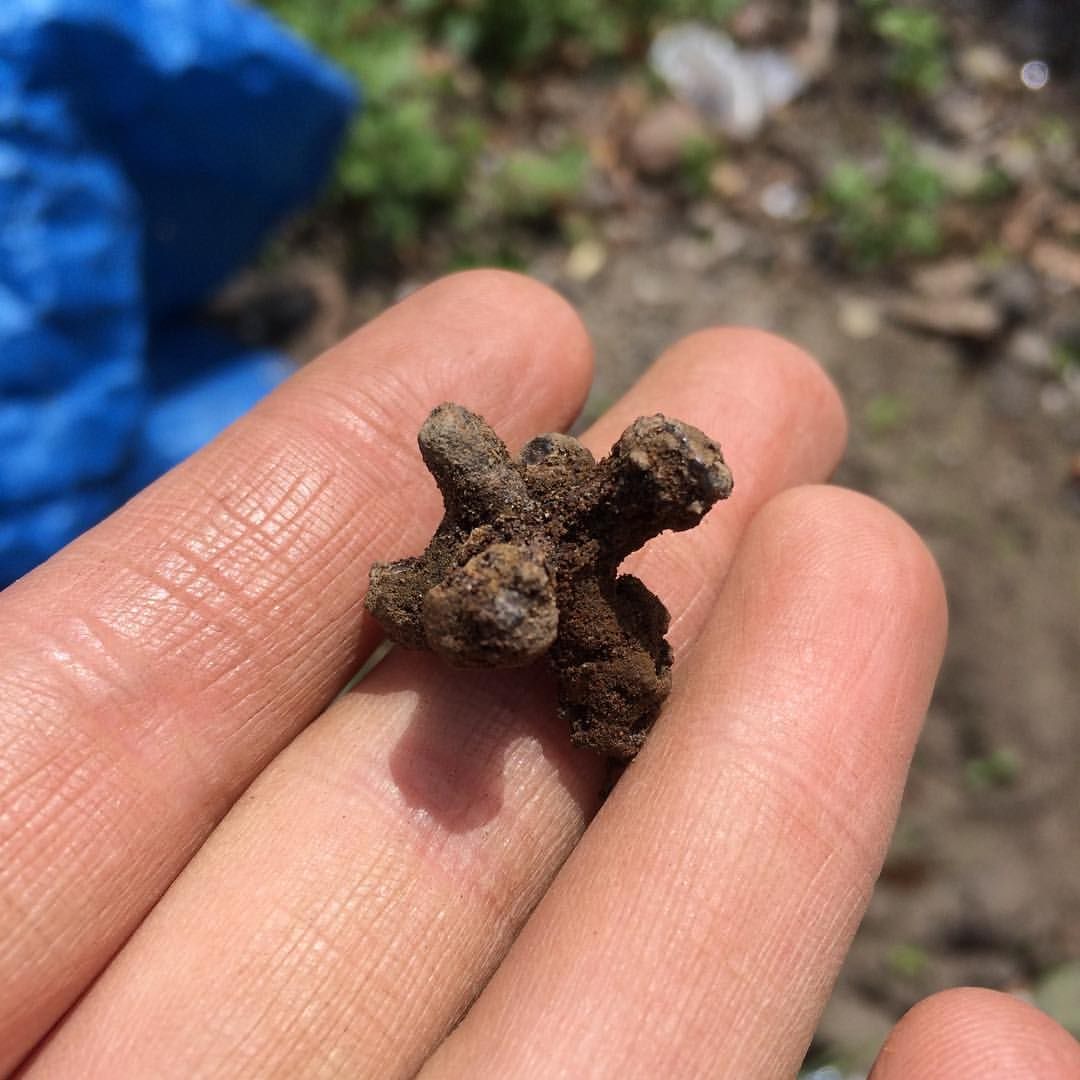
An old iron jack from the mid-1900s. (Photo: Joseph Bagley/City of Boston Archaeology Program)
But what is clear in hindsight, or in the pages of a book, is not necessarily quite so visible in an old backyard. “To be honest, I thought this site was going to be a little boring,” Bagley says, noting that there was garbage pickup in 1940s Boston, and no real reason for the former inhabitants to leave their belongings laying about. But as soon as he and his team started looking, they began finding traces of their lives: a peach pit, rusty iron jacks, even a folk record from the late 1950s. Most were likely scattered during an incident in the 1970s, when vandals broke in and ransacked the place. “It unfortunately wrecked the house,” says Bagley, “but at least we found some of the stuff.”
Despite the title of the Malcolm X Dig, archeological protocol requires going deeper, and some further-back finds have proven much more mysterious. Around the corner, against the east wall of the house, Ramona Steele is about three feet into a meticulously dug pit. Steele, an archeology graduate student at the University of Massachusetts Boston, has been digging since Monday, and recently broke through the upper strata of yellow dirt into a rich, brown layer that dates back to the 18th century. Every few minutes, she calls Bagley over and hands him something new—a wineglass stem, a wig curler, a flip-up pewter mug top (“to keep the flies out of your beer,” Bagley says).
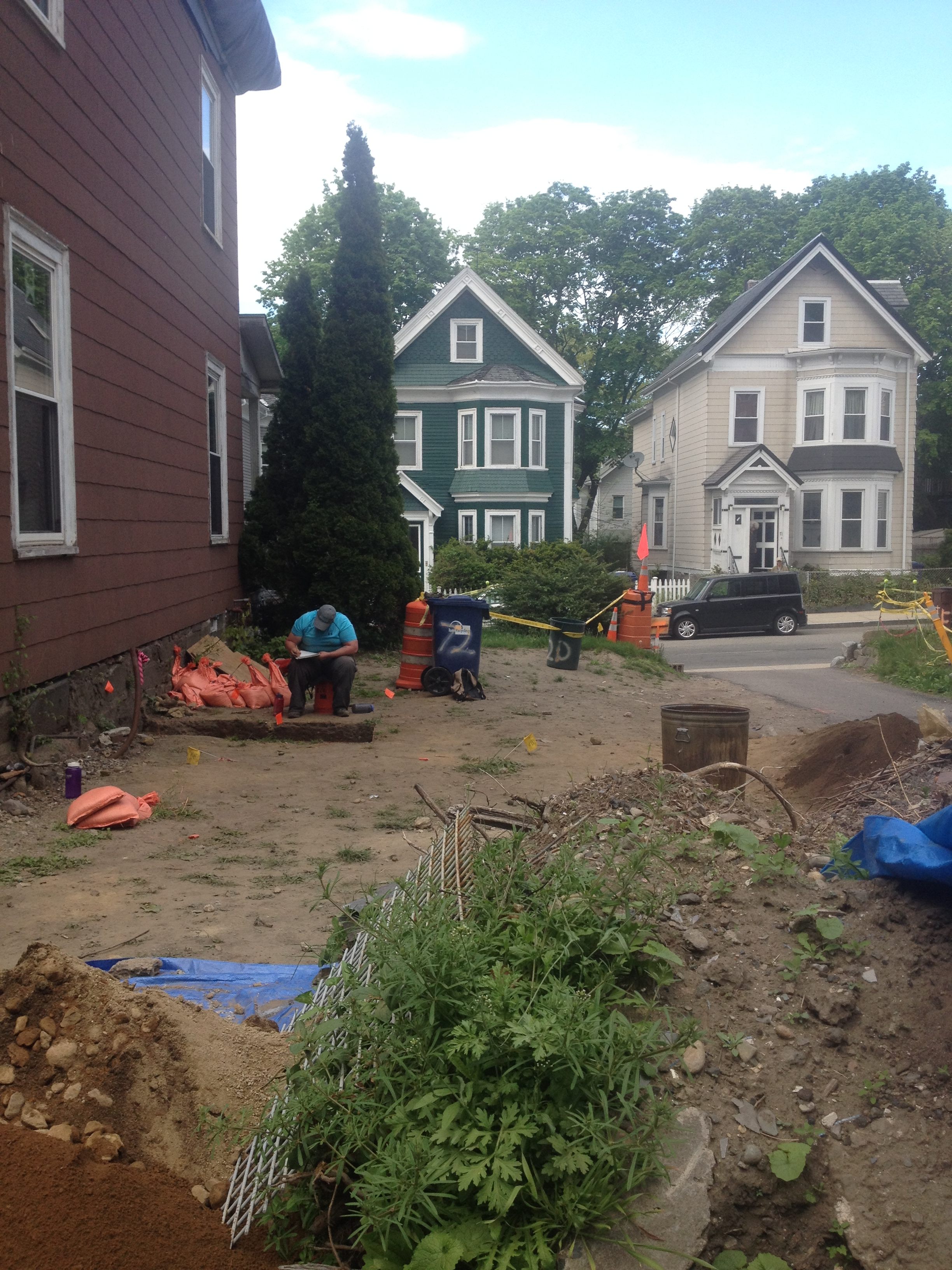
Ramona Steele takes notes on colonial artifacts she found over the course of the week. (Photo: Atlas Obscura)
These artifacts are totally unexpected. According to all maps and records, this site was straight-up farmland until the house was first built in 1874. But here are the unmistakable trappings of something else: wealthy, colonial domestic life, surfacing over and over again. “I’ve dug on actual known colonial sites that had less stuff,” says Bagley. “We have a big fancy house hiding somewhere here.”
Bagley carries Steele’s buckets of dirt over to the driveway, where workers pour it through sifting screens. Charles Deknatel, a land planner and frequent Boston City Archeology volunteer, has already found “some very nice smoking pipe pieces,” he says. The teenagers at the next station over, who wandered in off the street just this morning, quickly unearthed a lead musket ball the size of a marble. Passing it from person to person, they speculate as to who might have shot it, and why.
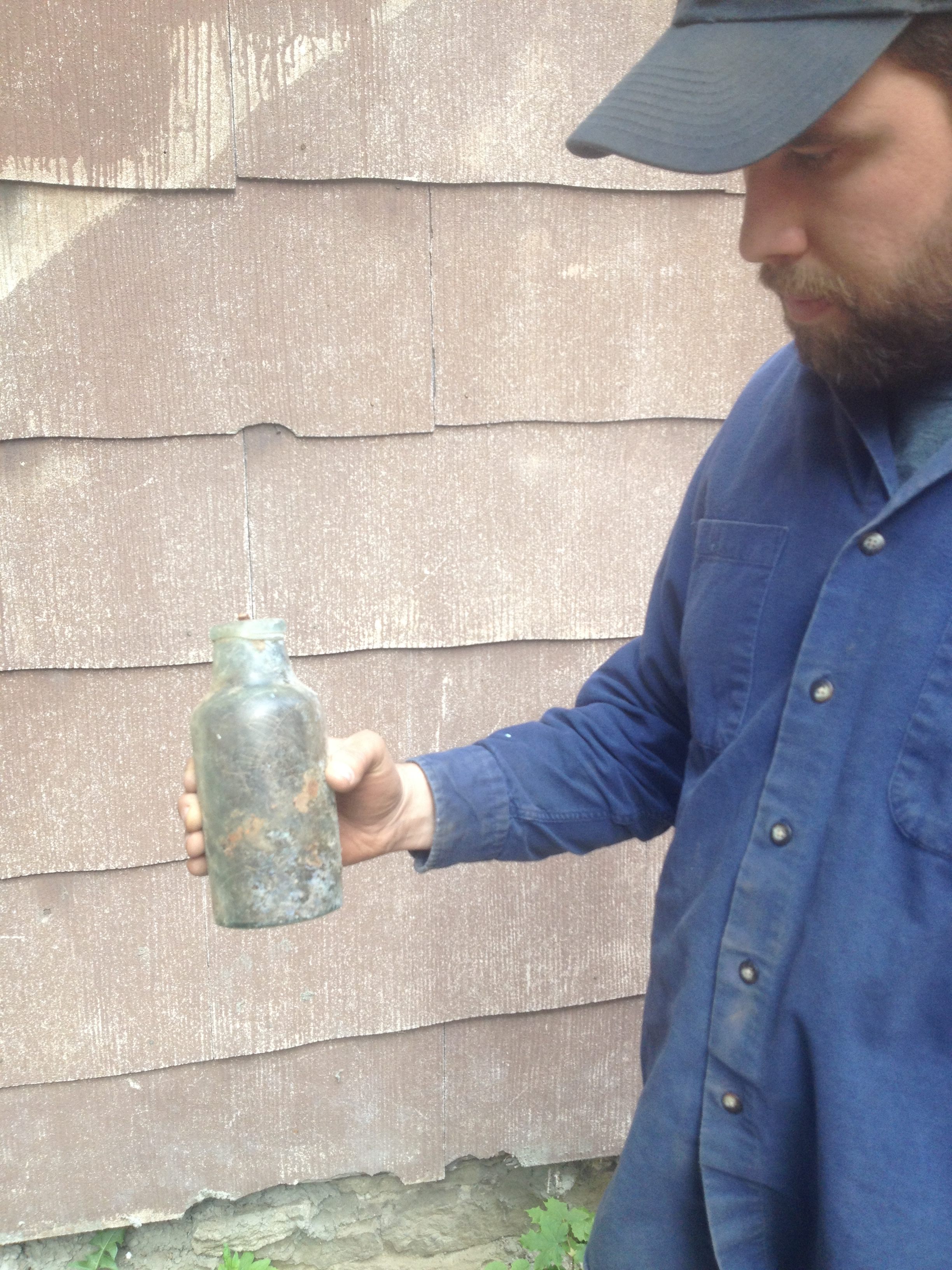
Joseph Bagley holds a bottle that once belonged to a 1920s Irish family. (Photo: Atlas Obscura)
Though those specifics are lost to time, the team did solve another mystery today. In between those surprise colonial aristocrats and the Little-Coleman household, records show the space was occupied by a few Irish families, who shared the home during the Great Depression. For days, Bagley could find no sign of them. Today, they finally showed themselves in a trash pit in the backyard, in the form of lobster shells, a false tooth, and an assortment of medicine and perfume bottles. Bagley pulls one out of its plastic storage bag—a seed started growing in it while it was underground, and the roots still show through the mottled glass.
Now that they’ve been found, bagged, and labeled, all these formerly lively bits and bobs—jacks, pipes, and lobster shells alike—are heading to a lab in West Roxbury to get cleaned, examined, and more precisely dated. After that, they will end up shelved somewhere, available to future scholars. Bagley hopes this final resting place will be close by: “We’re trying to keep it in the neighborhood,” he says. After all these years, it would be a shame to lose them.


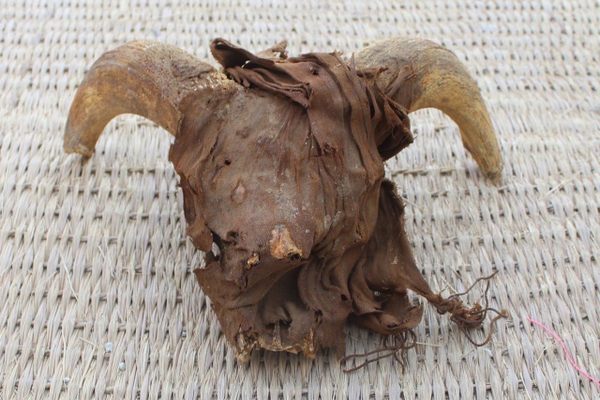









Follow us on Twitter to get the latest on the world's hidden wonders.
Like us on Facebook to get the latest on the world's hidden wonders.
Follow us on Twitter Like us on Facebook